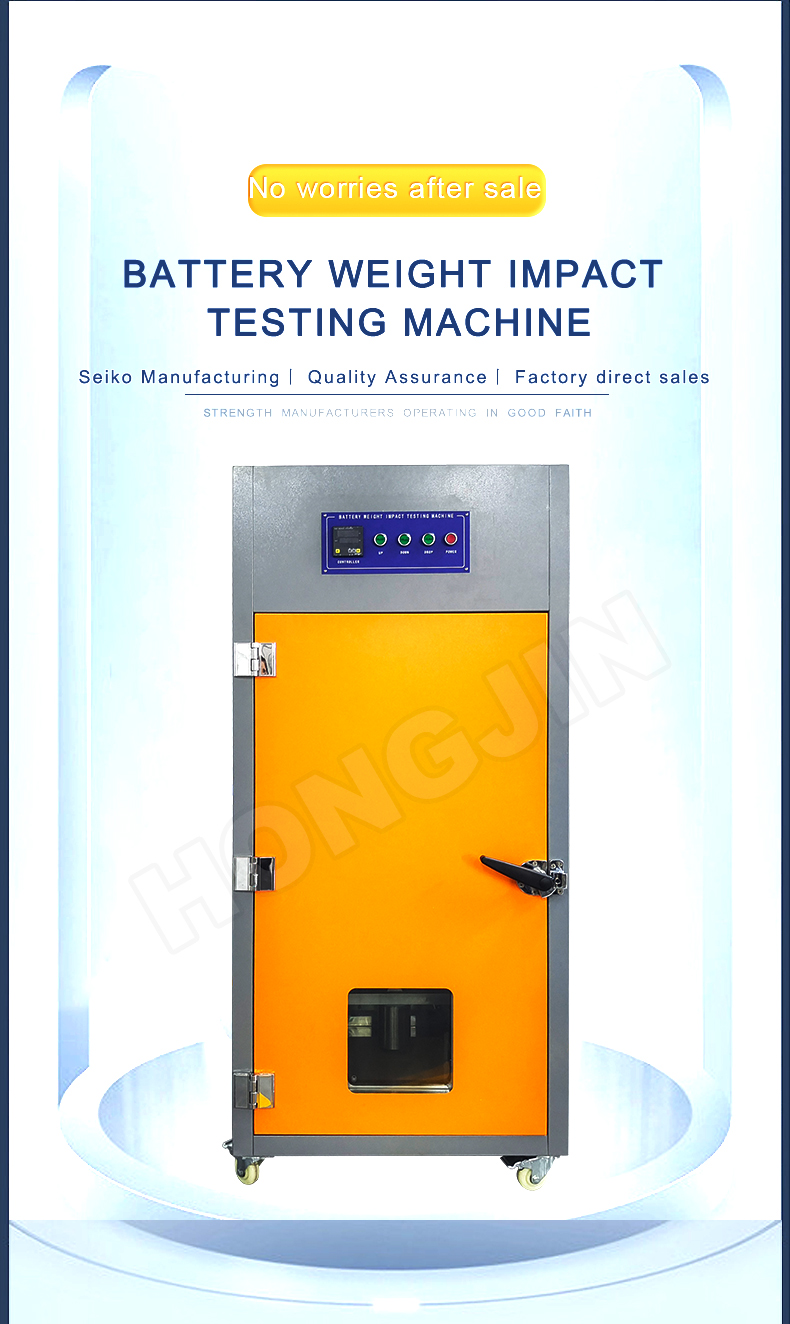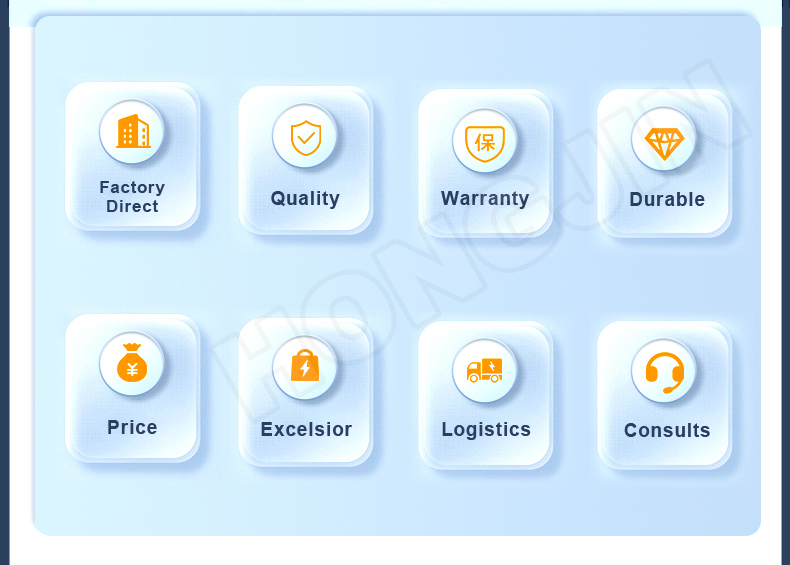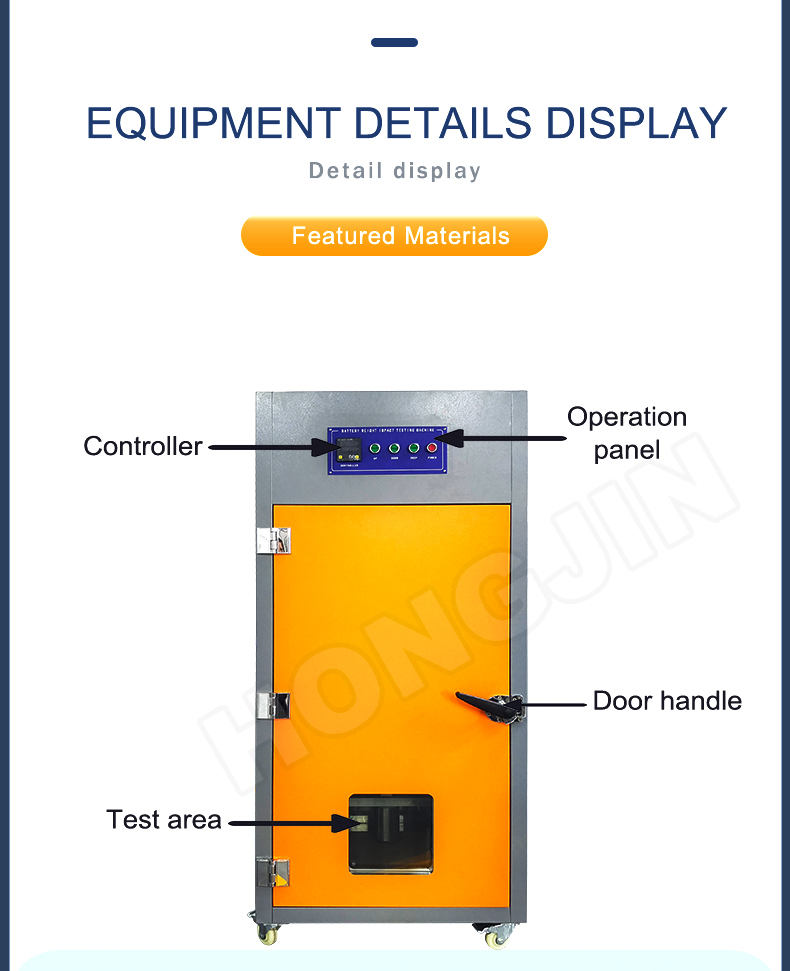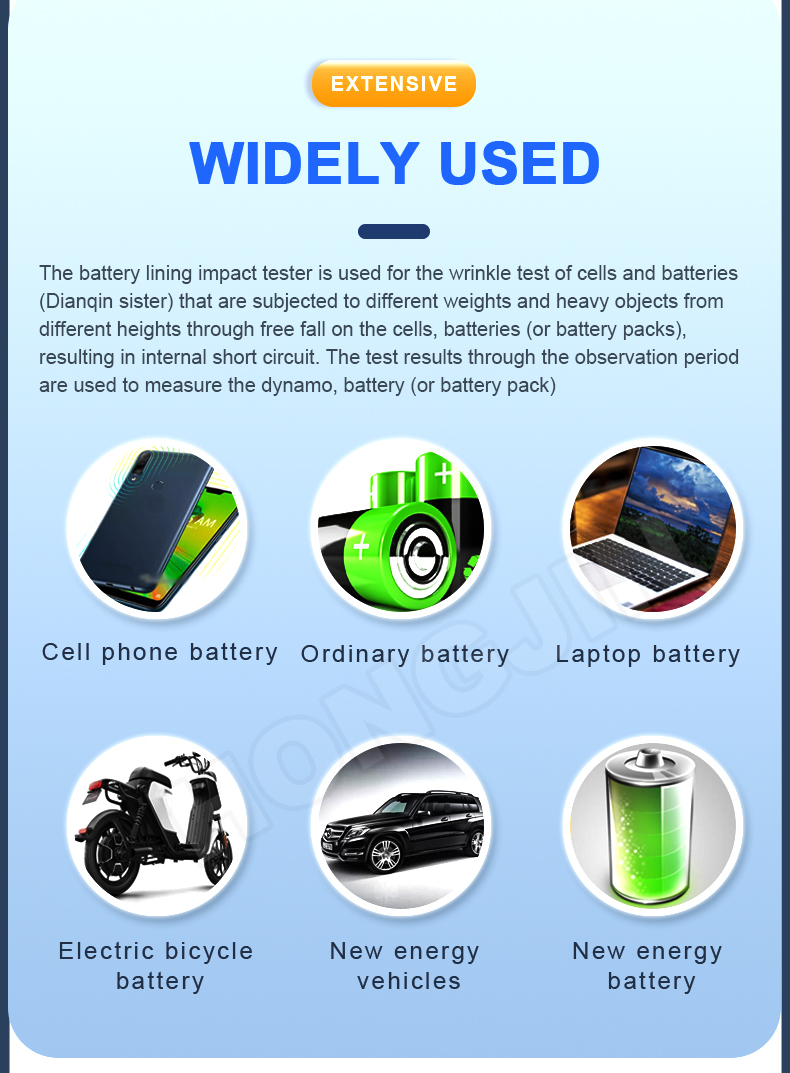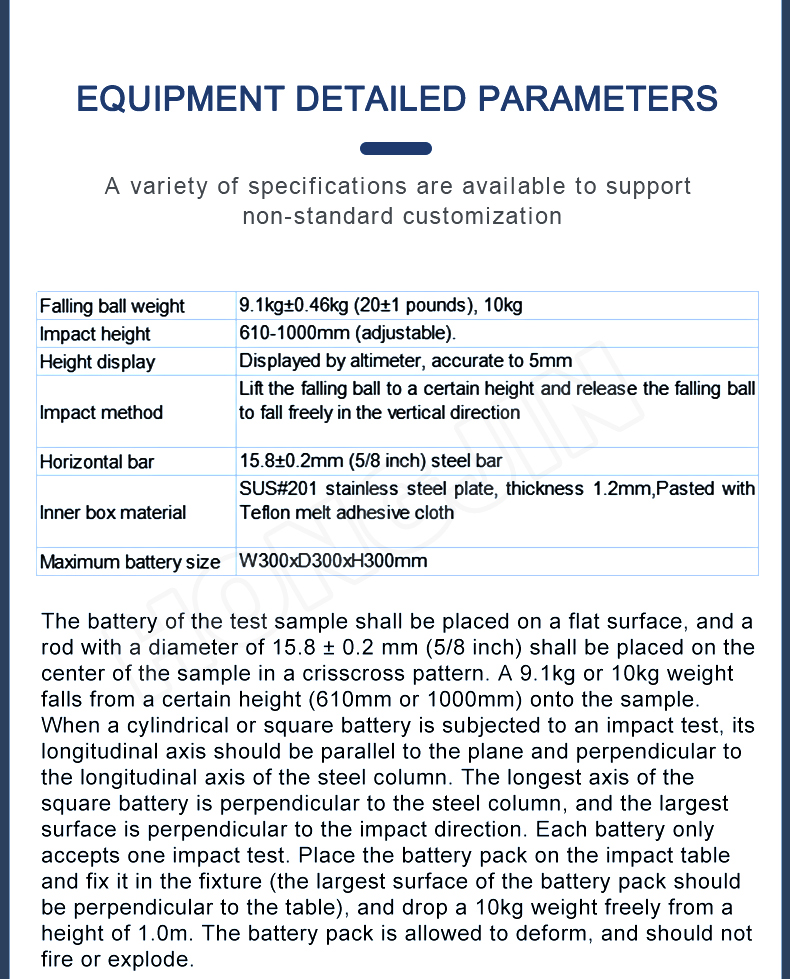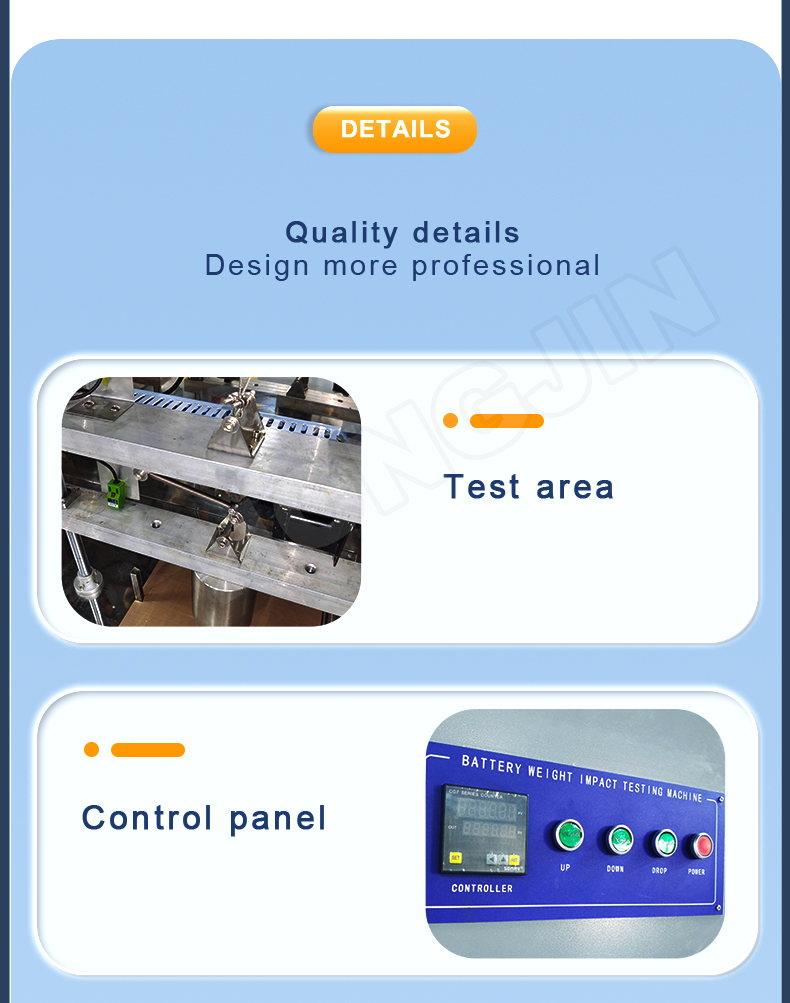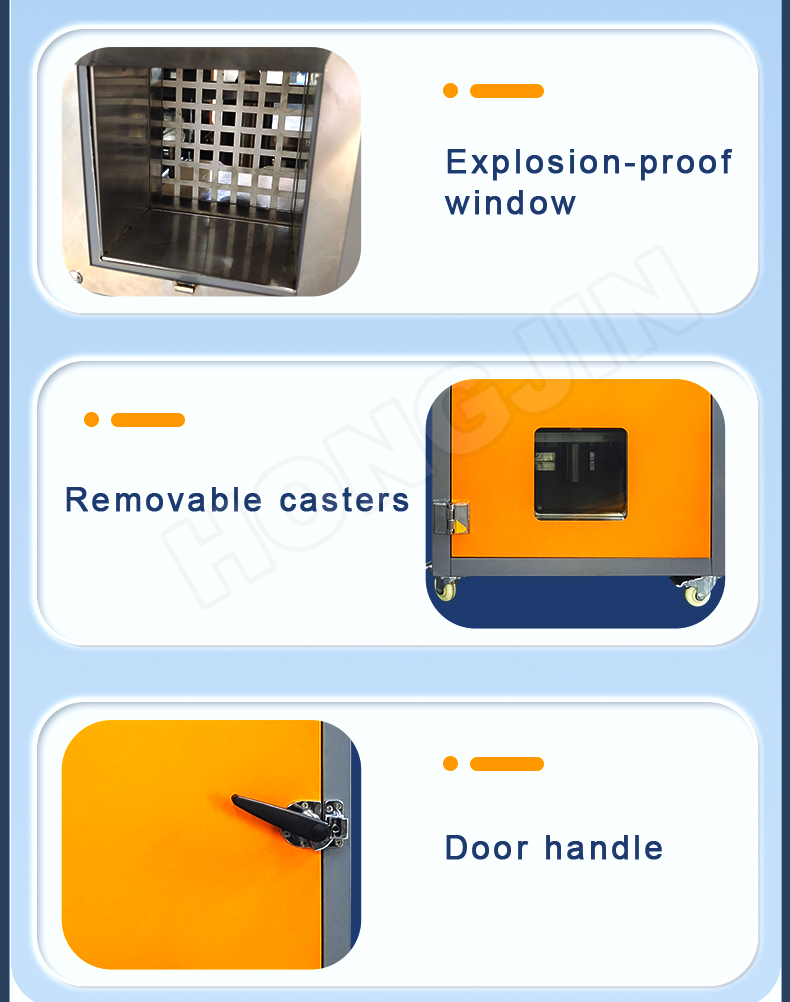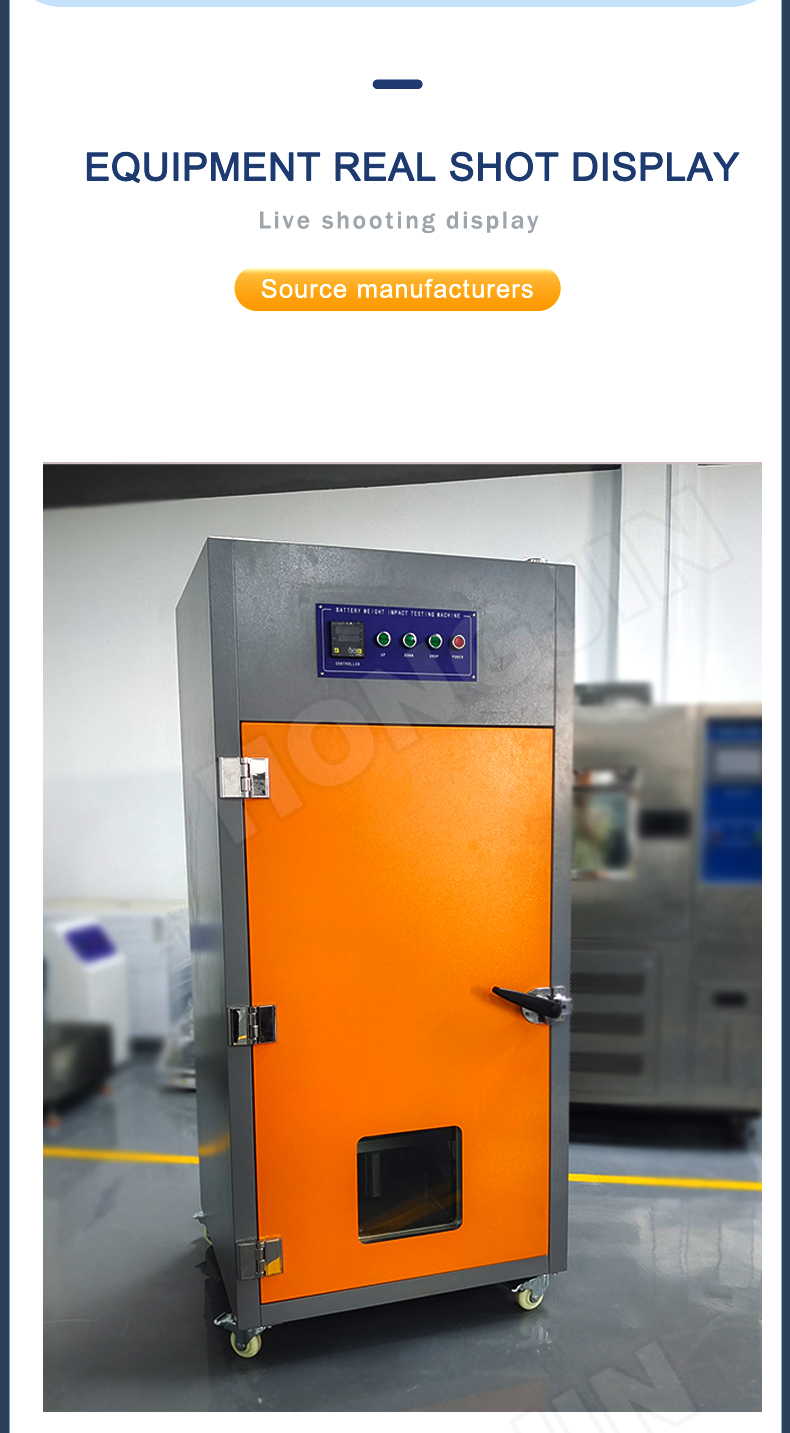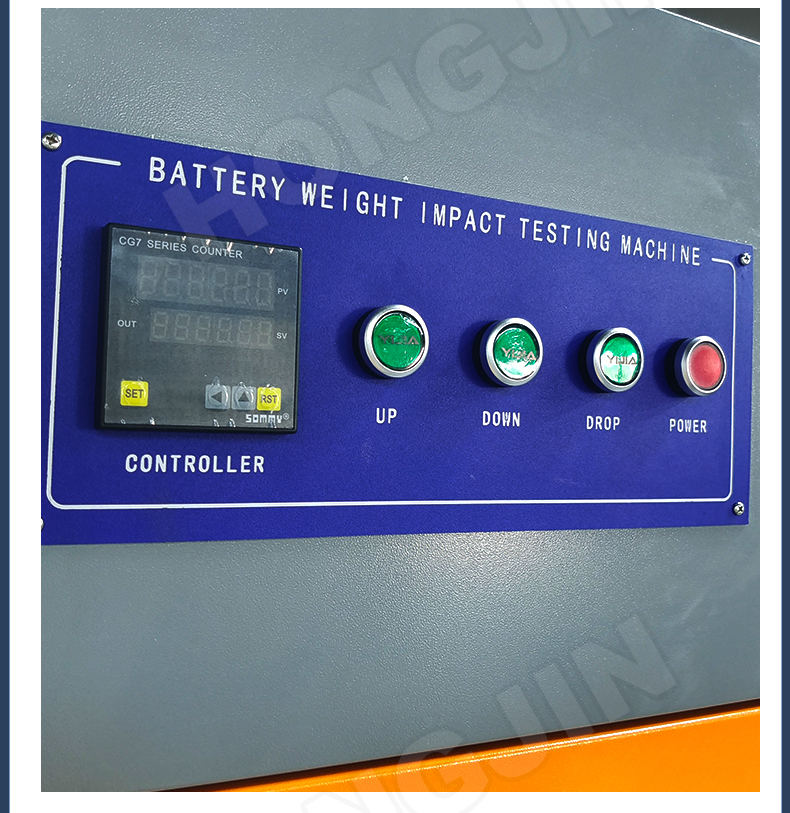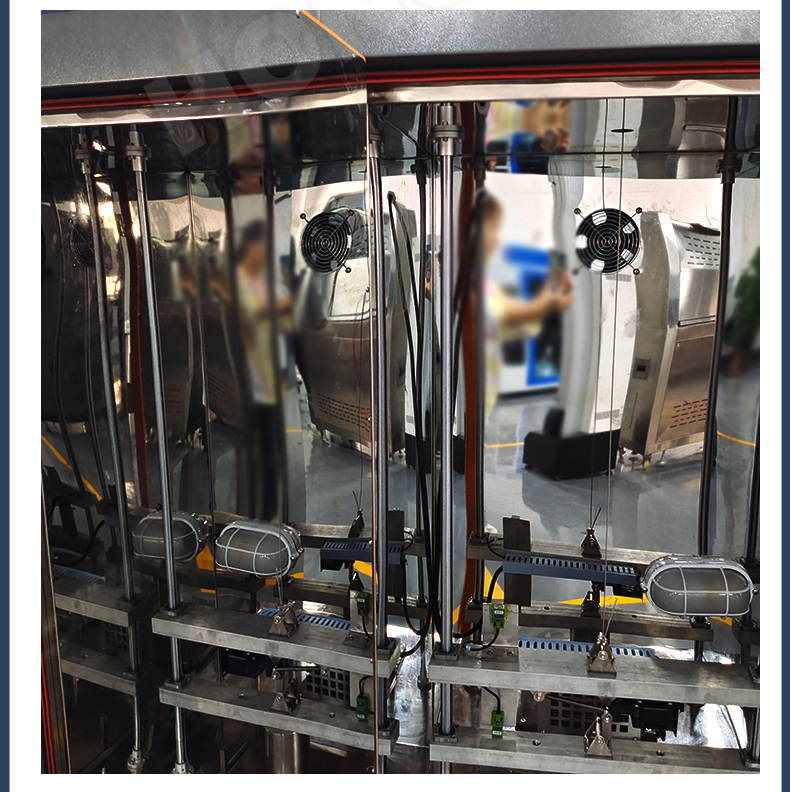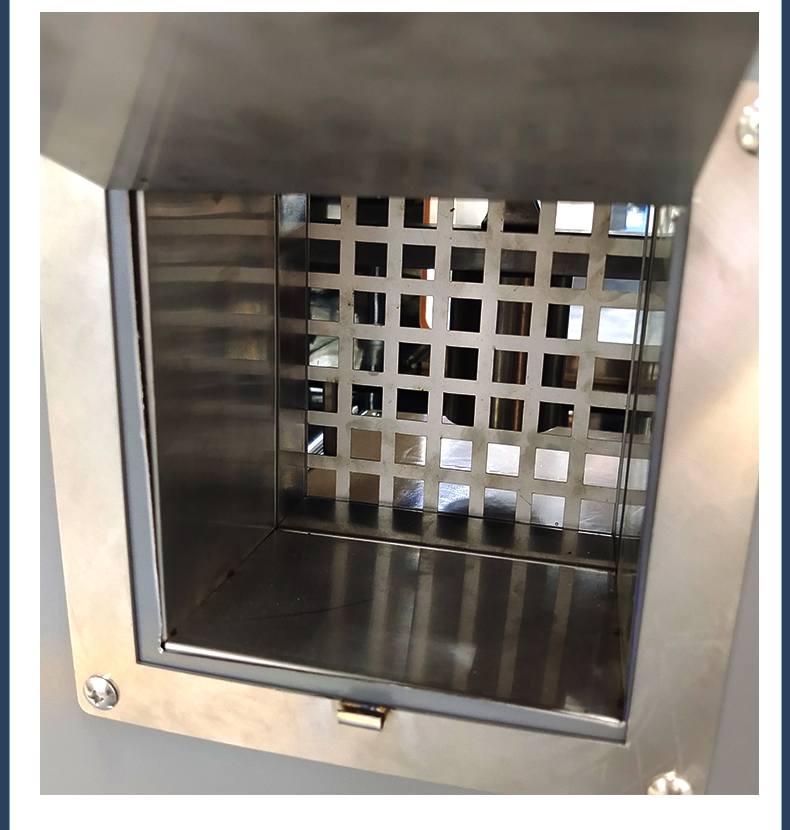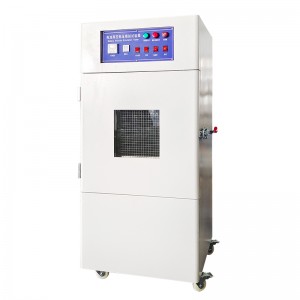Industrial electronic Battery Weight Impact Test Machine/Battery Impact Tester
The battery of the test sample shall be placed on a flat surface, and a rod with a diameter of 15.8 ± 0.2 mm (5/8 inch) shall be placed on the center of the sample in a crisscross pattern. A 9.1kg or 10kg weight falls from a certain height (610mm or 1000mm) onto the sample. When a cylindrical or square battery is subjected to an impact test, its longitudinal axis should be parallel to the plane and perpendicular to the longitudinal axis of the steel column. The longest axis of the square battery is perpendicular to the steel column, and the largest surface is perpendicular to the impact direction. Each battery only accepts one impact test. Place the battery pack on the impact table and fix it in the fixture (the largest surface of the battery pack should be perpendicular to the table), and drop a 10kg weight freely from a height of 1.0m. The battery pack is allowed to deform, and should not fire or explode.
Standard
“UL1642, UL 2054 “Lithium Battery Standard”
UN38.3 “Standard Regulations for Testing Lithium Cells and Batteries”
IEC62133GB/T 18287-2013 “General Specification for Lithium-ion Batteries for Cell Phones, Heavy Object Impact Test”
GB 31241-2014 “Safety Requirements for Lithium-ion Cells and Battery Packs for Portable Electronic Products”
GB-31241-2014 “Safety Requirements for Lithium-ion Cells and Battery Packs for Portable Electronic Products”
QB/T2502 “General Specification for Lithium Ion Batteries”
| Falling ball weight | 9.1kg±0.46kg (20±1 pounds), 10kg |
| Impact height | 610-1000mm (adjustable). |
| Height display | Displayed by altimeter, accurate to 5mm |
| Impact method | Lift the falling ball to a certain height and release the
falling ball to fall freely in the vertical direction |
| Horizontal bar | 15.8±0.2mm (5/8 inch) steel bar |
| Inner box material | SUS#201 stainless steel plate, thickness 1.2mm,Pasted
with Teflon melt adhesive cloth |
| Maximum battery size | W300xD300xH300mm |




